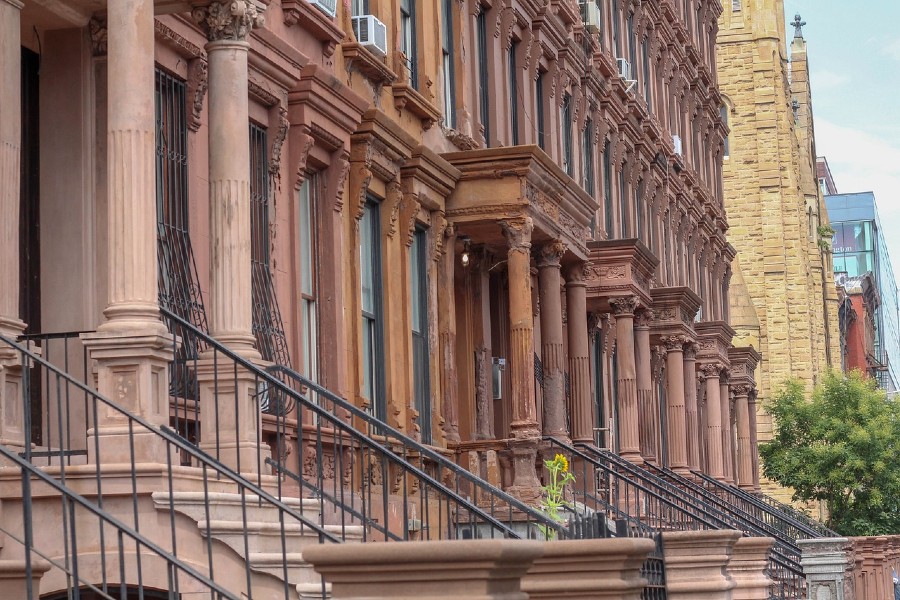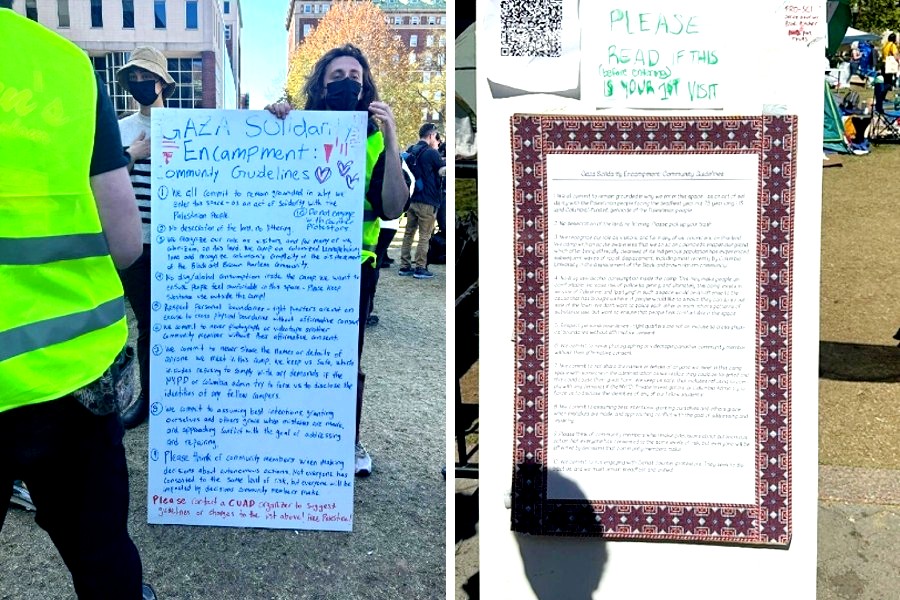 Today, the New York Immigration Coalition, Education Collaborative, allies, and immigrant New Yorkers rallied on the steps of Tweed Courthouse to demand more equitable access to New York City public schools.
Today, the New York Immigration Coalition, Education Collaborative, allies, and immigrant New Yorkers rallied on the steps of Tweed Courthouse to demand more equitable access to New York City public schools.
They do this for immigrant youth and families through two critical education programs.
Advocates are calling for a $4 million investment in outreach, application, and enrollment support for immigrant families of 3- and 4-year olds through the LIFE Project; and a $2.1 million investment in a pilot program giving newly-arrived high-school-aged immigrant youth access to transfer schools in the outer boroughs.
Without these critical investments, advocates fear that far too many immigrant families will be left behind by our educational system and unable to access critical early childhood and English Language Learner programs that have been proven to support the long-term success and growth of children.
“Having equitable access to schools is fundamental to building our city’s future,” said Murad Awawdeh, Executive Director, New York Immigration Coalition. “Immigrant students are consistently underserved, and programs that families can’t access due to geography or complicated processes will only widen this gap further. Research has shown that investing in early childhood programs increases outcomes for children. Existing services like the LIFE Project are not expansive enough, as immigrant families are routinely unable to apply and enroll due to a lack of understanding of the availability of programs and a complicated registration system. Furthermore, forcing immigrant students to travel excessively long distances to attend a small number of transfer schools with programs specific to their needs is an immense burden for youth balancing work and supporting younger siblings at home, ultimately jeopardizing their education while increasing the risk of drop-out. New York City’s Department of Education can create more opportunities for the success of every student from 3k to high school by further investing in both the LIFE Project and in a pilot program to expand transfer school access to the outer boroughs. Low-income families face enough hardships on a day-to-day level—gaining a quality education for their children shouldn’t be one of them.”
“As a domestic worker, I dedicate my livelihood to taking care of other families’ children, often at the expense of my own. As an immigrant, I often don’t know how to navigate city resources to ensure my children have the best opportunities,” said Deslyn Charles, Domestic Worker, and Member, Carroll Gardens. “The LIFE Project is not only a proven way to connect immigrants like me with critical resources for our children but a recognition that my city values me and wants my family to thrive. I stand with my fellow domestic workers and immigrant parents across the city to call on full investment and expansion of LIFE so we can thrive together.”
“Every year, Advocates for Children of NY helps newly arrived, immigrant youth enroll in high school, but we continue to struggle with identifying schools that are willing to accept older, newcomer students ages 16-21 who require intensive English instruction, academic remediation, and socio-emotional support in order to graduate. Oftentimes, the only appropriate school options for this population of students are “ELL transfer schools,” but of the five that exist, only one is located outside of Manhattan, making it nearly impossible for youth in Queens, the Bronx, Brooklyn, and Staten Island to attend those schools,” said Rita Rodriguez-Engberg, Director, Immigrant Students’ Rights Project at Advocates for Children of New York. “By funding programs to support this population of students at existing transfer schools in their neighborhoods, the City has an opportunity to show our immigrant students that good schools are in fact an option for them.”
“Additional support for newly arrived older immigrant youth is desperately needed. Dropout rates are high and enrollment rates are low for this group because there is a lack of support in the current school system,” said Sophie Riina, Director of Education Programs for the Center for the Integration & Advancement of New Americans (CIANA). “These students must be provided with better access to transfer schools, with teachers who are culturally sensitive and have expertise in helping older newcomer youth get the language support that they need. Most of these students reside in the outer boroughs of NYC, yet nearly all the transfer schools that are set up to help them are in Manhattan. NYC can and should do better. We must establish more transfer schools in the outer boroughs to help the newly arrived immigrant youth succeed.”
“Nearly 25% of all English Language Learners (ELLs) in New York City (NYC) are Asian American Pacific Islander (AAPI). Last year, 14% of AAPI ELLs eligible for graduation dropped out, compared to 1% of their native English-speaking AAPI peers. “said Kaveri Sengupta, Senior Policy Coordinator for Education at the Coalition for Asian American Children and Families (CACF).
“These statistics clearly indicate that our schools have not been meeting the needs of our students who struggle the most,” said Sengupta. “To begin properly addressing these issues, the City must invest $2.1 million in the transfer school pilot program for older newcomer youth. These students often face the highest barriers to reaching their full potential, and deserve access to targeted support in the boroughs where they live,” said Kaveri.
“Across New York City, thousands of immigrant families and youth continue to face systemic barriers in access to public 3K-12 education,” said Ramon Peguero, Esq., President & CEO, the Committee for Hispanic Children & Families (CHCF). “The Committee for Hispanic Children & Families (CHCF) joins our partners in the NYIC Education Collaborative in calling on the city to make meaningful investments in programs that support families and youth in navigating complex systems to ensure they are connected to programs that meet their unique needs in a timely manner. The city must leverage the expertise of partners on the ground working within immigrant communities to maximize linguistically responsive outreach, safeguard families, assuage hesitations in connecting with city agencies, and ensure that every child gains access to holistically supportive and culturally responsive educational spaces and opportunities.”
“The time to recognize and affirm our students is now, particularly our immigrant students from destinations far and wide. Let’s create an inclusive school system that assures our immigrant students and their communities their right to a just and comprehensive education. We must not only open our doors to immigrants, but we must also ensure our curriculum and pedagogy reflects their gifts within the classroom,” said Jose Vilson, Executive Director, EduColor.
“The families we work with on the LIFE Project say that having someone guide them through the whole process makes an enormous difference,” said Chris Curran, Director of Adult Education, Fifth Avenue Committee. “We have supported multiple families of children with special needs and were able to help them find programs that suited their particular circumstances. Many families like these would not be able to participate in Pre-K or 3K without the type of individual support the LIFE Project provides, in places where they feel most comfortable. We need to be able to continue providing this incredibly valuable service to our community.”
“Without question, the COVID-19 pandemic deprived English Language Learners and immigrant students the education that they deserved, and further widened their already substantial achievement gaps,” said Darnell Benoit, Executive Director of Flanbwayan Haitian Literacy Project. “The Department of Education is obliged to fix these problems by giving our most vulnerable students what they deserve, which is access to transfer school programs that can address their academic and social-emotional needs. This would not only improve equity and access across all boroughs, but it would ensure immigrants have a clear pathway to a good and prosperous future like all students deserve.”
“LSA Family Health Service has worked with NYIC to provide the LIFE project services to our community for the last five years,” said Ray Lopez, Executive Director, LSA Family Services. “We have helped hundreds of families access NYC‘s Pre-K and 3K programs. Now we want to join the fight to expand the LIFE project citywide because all of our immigrant families deserve access to quality education.”
“As a city that prides itself on being welcoming, diverse, and inclusive to all, we must live out our values and ensure immigrants are fully included in our schools so they can thrive. Investing in both the LIFE project and the First Step Transfer Pilot Program is necessary to ensure that everyone has access to quality education,” said Aracelis Lucero, Executive Director of Masa. “We cannot truly call ourselves a sanctuary city if the basic human right to an education is denied to recently arrived immigrant youth seeking out a better life for themselves and their families. We can and must do better. We are proud to work alongside the New York Immigration Coalition’s Education Collaborative and LIFE partners to address the critical need to expand culturally and linguistically responsive enrollment supports for immigrants and the number of seats available for older and recently arrived immigrant youth ages 16-21 so they can pursue their educational goals with the proper support.”
“Across the five boroughs, nearly four thousand older newcomer immigrants struggle to access appropriate schools that can support their unique educational needs,” said Francois Nzi, Executive Director of New York Math Academy and Coaching Services (NYMACS). “Older students often have to support their families economically, take care of younger siblings and aging relatives, and may have experienced high levels of trauma on their journey to this country. It is unacceptable that they are shut out of neighborhood programs and that they must travel long distances simply to access educational and socio-emotional supports. Transfer schools that serve older newcomer immigrant students are almost exclusively located in Manhattan. This year, New York City must finally expand access to transfer schools in each and every borough to serve students where they live and work.”
“Families come to NYC with the hope their children will receive a quality education. The City has the opportunity to actually make that a reality by investing a $2.1M transfer school pilot program for older youth immigrant youth to participate in and be empowered by so that they can participate in this democratic society. We must acknowledge the exclusionary barriers we present to our immigrant families and provide them with all of the tools and access to the supports they deserve. The richness they bring will bring wealth to our schools and a global perspective to the communities they live in. The city’s budget reflects its values, let’s have a budget that includes meeting the needs of our immigrant students and families,” said the steering committee of Parents for Responsive Equitable Safe Schools (PRESS) NYC.
“The LIFE Project will be critical to serving the new influx of Ukrainian and Russian-speaking immigrants in New York City,” said Dr. Dmitri Daniel Glinski, president of the Russian-Speaking Community Council. “Ukrainian language social media pages are already full of newcomers with questions on education. Our youth and families have long been underserved and many are unable to access programs like 3K and Pre-K without the kind of one-on-one assistance the LIFE Project would allow us to provide. Now more than ever, the City must invest in our immigrant youth to make sure that all immigrant students have access to quality education programs.”
Become a Harlem Insider!
By submitting this form, you are consenting to receive marketing emails from: Harlem World Magazine, 2521 1/2 west 42nd street, Los Angeles, CA, 90008, https://www.harlemworldmagazine.com. You can revoke your consent to receive emails at any time by using the SafeUnsubscribe® link, found at the bottom of every email. Emails are serviced by Constant Contact








